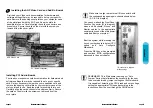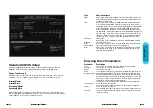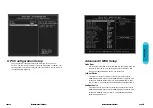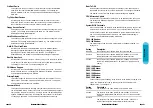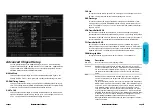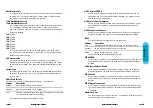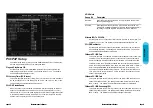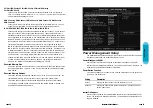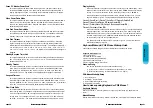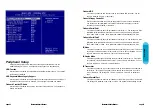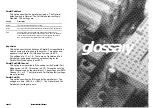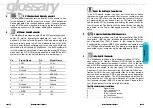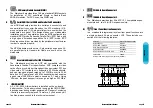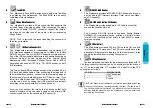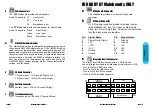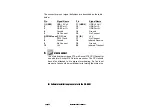
Mainboard User's Manual
Page 51
Q
WAKEUP-LINK Header
The Mainboard provides a WAKEUP-LINK header used to con-
nect an add-in NIC (Network Interface Card) which has Wake-
on-LAN capability.
R
SB-LINK and Creative PCI Header
The Mainboard provides headers for PCI add-in cards that
support the Creative SB-Link.
The Creative SB-LINK interface supports Sound Blaster
AWE64D PCI compatible sound solutions. SB-LINK utilizes
Intel’s PC-PCI technology that exists in Intel 440LX or newer
corelogic chipsets.
S
CPU Card Slot 1
The Mainboard provides a 242-pin CPU card slot for use with
Intel Pentium II / III processor. The CPU card should have a fan
attached to it to prevent overheating. If a fan is not present, a fan
should be installed prior to turning the system on.
T
CPU Fan Connector
The recommended heatsinks for the processor are those with 12
Volt three-conductor fans that can be connected to the fan connec-
tor J17 on the mainboard. J17 pr12 Volts DC to the CPU
cooling fan as follows:
J17 PIN
SIGNAL NAME
1
(No Connection)
2
+12V
3
Ground
CAUTION! Be sure that sufficient air circulation is available across the
processor’s heatsink by regularly checking that your CPU fan is work-
ing. Without sufficient circulation. the processor could overheat and
damage both the processor and the mainboard. You may install an a
auxiliary fan if necessary.
N
Flash BIOS
The Mainboard flash BIOS provides users with more flexibility
in upgrading their mainboards. The flash BIOS can be easily
reprogrammed via software.
O
Floppy Drive Connector
The Mainboard provides a 34-pin connector that supports the
included floppy drive ribbon cable. After connecting the single
end to the on-board “FLOPPY” connector, connect the remain-
ing plugs on the other end of the cable to the corresponding
floppy drives.
NOTE: Pin 5 is removed to prevent inserting the connector in
the wrong orientation.
P
IDE Device Connector's
The Mainboard provides (2) independent bus-mastering PCI
IDE interfaces capable of supporting up to Mode 4 and Ultra
DMA-33 devices. The system BIOS supports automatic detec-
tion of the IDE device data transfer rate and translation between
different kinds of device modes such as Logical Block
Addressing (LBA), Extended Cylinder Sector Head (ECSH)
translation modes and ATAPI (e.g., CD-ROM) devices on both
IDE interfaces.
The two on-board IDE connector's support the provided 40-pin
IDE hard disk ribbon cables. After connecting the single end to
the mainboard connector's, connect the two remaining plugs at
the other end of your hard disk(s) and/or CD Rom drive(s). If you
install two hard disks and/or CD Rom drives, you must config-
ure the two drives by setting their IDE master/slave jumpers
according to the documentation for those devices.
Also, you may connect the two hard disk drives so that both
become Masters, using one ribbon cable on the primary IDE
connector and one on the secondary IDE connector.
Page 50
Mainboard User's Manual

